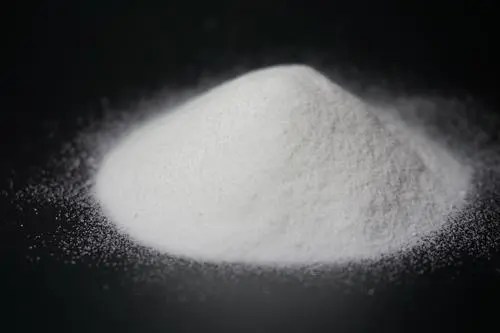Under the background of “rising demand for high-end automotive coatings” and “carbon neutral, energy saving and environmental protection”, water-based no-medium coating process is gradually adopted by more enterprises by virtue of its time-saving, paint-saving and low VOC emission characteristics. However, the overall film thickness of water-based no-medium coating process is also reduced, and orange peel, particles, shrinkage, pinholes, flow marks and other phenomena can easily appear. By matching with high-end titanium dioxide coating, it may be effectively improved.
Compared with the traditional process, the consumption of paint in the water-based medium-free coating process is only eighty percent of the original process, energy consumption accounts for seventy percent, VOC emissions account for sixty-eight percent, and in terms of environmental protection, carbon dioxide emissions are reduced by 10-15 percent and waste is reduced by 25 percent. It also saves the equipment and resources of the middle coating part and increases the available area of the workshop.

Since this technology eliminates the middle coating part, the overall film thickness is reduced and UV rays can damage the primer more easily. Therefore, there are considerable demands on the coating material. The main focus is on two points.
1、The water-based medium-free coating process requires that the surface of the electrophoretic coating does not have any defects, and the roughness should be less than or equal to 0.25 of the full area.
2、The coating needs to have strong anti-UV performance.
The emergence of high-end titanium dioxide coatings, to a large extent to make up for the shortcomings of the water-based no-medium coating process, and can meet the more demanding process requirements, has been used in a large number of automotive coating field, or become the best water-based no-medium coating process partner.
Application 1: More stunning appearance
When titanium dioxide nanopowder is used in the coating system with shiny aluminum powder or mica pearlescent pigment, it can meet the requirements of water-based medium-free coating process well because the particles of the coating are extremely small. And it will make the finished products have “different color with angle” effect. This optical effect of flashing different colors with different observation angles has been used in the painting of high-class cars since the early 1980s, and has become the standard of modern luxury cars.
Application 2: Stronger UV resistance
According to different wavelengths, UV rays can be divided into short-wave region, medium-wave region and long-wave region. Short-wave ultraviolet energy is the highest, but mostly blocked by the ozone layer, most of the damage to the human body is the medium-wave and long-wave ultraviolet. Traditional organic anti-UV agents only have a shielding effect on the medium-wave region or long-wave region UV, with a single effect. Nano titanium dioxide, because of its small particle size and high activity, can not only absorb UV rays, but also emit and scatter UV rays, thus having the ability to block both medium-wave and long-wave UV rays, which is more effective.
Adding titanium dioxide nano-powder to the coating in a certain proportion can effectively shield UV rays and protect occupants from UV radiation. Applying it to the surface of car window glass has the effect of anti-fouling, dustproof, scratch-resistant, wear-resistant and fireproof. In addition, nano titanium dioxide is also used in large quantities in sunscreen cosmetics, sunscreen clothing, sunshades and other industries.
Application 3: Protect every electronic component
With the plasticization of materials and the rapid development of electronic components in vehicles, various drawbacks caused by carrying static electricity are becoming more and more prominent. Especially in new energy vehicles, in order to prevent damage caused by static electricity, titanium dioxide is used as a substrate, and nanotechnology is used to form a conductive oxide layer on the surface of the substrate through surface treatment and semiconductor doping treatment. Through the “conductive” way to consume static electricity, so as to protect the equipment from static interference.
The transparent or white conductive titanium dioxide is added in the no-medium coating process, so that the final coating has the characteristics of anti-static, dust-proof, mildew-proof, wear-resistant, acid and alkali-resistant. The surface treatment of the coating is simple, mold-free, good leveling, easy to clean, not affected by humidity, stable physical and chemical properties, and can be freely colored.
Application 4: More antibacterial and healthier
As nano titanium dioxide only needs sunlight (ultraviolet) to achieve the antibacterial effect. Therefore, good antimicrobial and deodorizing performance can be obtained by using nano-titanium dioxide spraying on automobile interior surfaces.
The water-based medium-free coating process has played a role model for the domestic automotive coating industry, fully filling the gap in the field of energy saving and pollution reduction in the domestic automotive coating industry, adding valuable experience and providing research value for the future automotive coating field. Combined with the upgrade of new materials, new technology and new equipment, we believe that in the near future, the water-based medium-free coating process will save energy and reduce emissions for more manufacturing industries.
*Disclaimer: The content contained in this article comes from the Internet, WeChat public numbers and other public channels, and we maintain a neutral attitude toward the views expressed in the article. This article is for reference and exchange only. The copyright of the reproduced manuscript belongs to the original author and the institution, and if there is any infringementPlease contact Jetson Chemical for deletion
